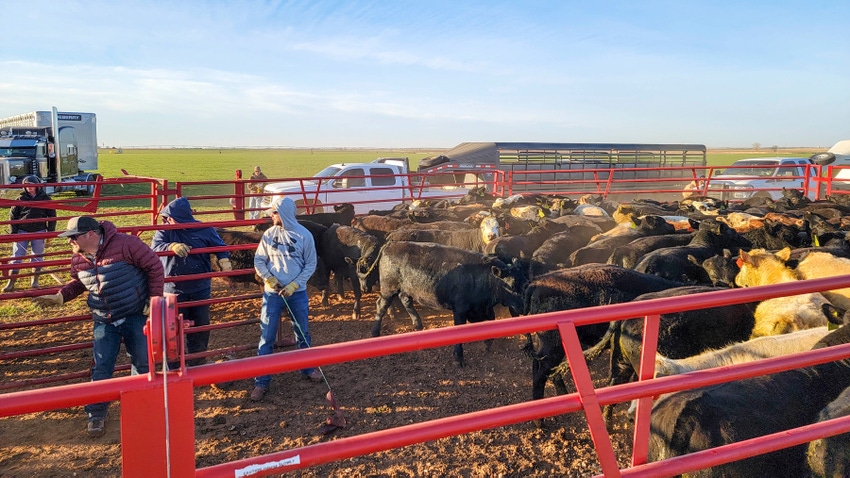Navigating Company Risks with Bagley Risk Management
Navigating Company Risks with Bagley Risk Management
Blog Article
Recognizing Livestock Threat Security (LRP) Insurance: A Comprehensive Guide
Browsing the realm of animals risk protection (LRP) insurance policy can be a complex undertaking for lots of in the farming industry. From just how LRP insurance policy functions to the various protection options available, there is much to discover in this extensive overview that might possibly form the method livestock manufacturers approach danger management in their services.

How LRP Insurance Coverage Works
Sometimes, recognizing the technicians of Livestock Danger Defense (LRP) insurance policy can be intricate, but breaking down exactly how it functions can supply clarity for ranchers and farmers. LRP insurance coverage is a danger administration tool designed to shield animals producers against unanticipated price decreases. The policy permits manufacturers to establish a protection degree based on their details demands, selecting the variety of head, weight variety, and insurance coverage cost. When the plan remains in place, if market value drop listed below the coverage rate, manufacturers can sue for the difference. It is necessary to keep in mind that LRP insurance policy is not a revenue assurance; instead, it concentrates entirely on rate danger defense. The protection duration generally ranges from 13 to 52 weeks, offering adaptability for producers to select a period that straightens with their manufacturing cycle. By utilizing LRP insurance, herdsmans and farmers can minimize the financial risks related to rising and fall market value, making certain higher security in their operations.
Qualification and Protection Options

When it involves coverage options, LRP insurance policy offers manufacturers the flexibility to pick the insurance coverage degree, insurance coverage duration, and recommendations that best match their threat monitoring demands. Insurance coverage levels usually range from 70% to 100% of the expected ending worth of the insured animals. Producers can also select protection durations that align with their manufacturing cycle, whether they are insuring feeder cattle, fed cattle, swine, or lamb. Recommendations such as cost threat security can further tailor coverage to protect versus damaging market variations. By recognizing the eligibility standards and insurance coverage alternatives available, livestock producers can make educated decisions to manage threat successfully.
Advantages And Disadvantages of LRP Insurance Coverage
When evaluating Animals Threat Protection (LRP) insurance, it is important for animals manufacturers to consider the advantages and disadvantages fundamental in this risk management tool.

Among the primary advantages of LRP insurance coverage is its capacity to give security against a decrease in animals prices. This can assist secure manufacturers from economic losses arising from market variations. In addition, LRP insurance policy uses a degree of flexibility, permitting manufacturers to personalize coverage degrees and plan durations to suit their details needs. By securing an ensured rate for their animals, producers can better take care of threat and strategy for the future.
One limitation of LRP insurance coverage is that it does not safeguard versus all types of dangers, such as disease outbreaks or all-natural calamities. It is critical for manufacturers to carefully assess their specific danger exposure and financial situation to figure out if LRP insurance is have a peek at this website the best risk administration device for their operation.
Recognizing LRP Insurance Premiums

Tips for Making The Most Of LRP Conveniences
Optimizing the benefits of Livestock Risk Security (LRP) insurance coverage needs tactical planning and positive risk management - Bagley Risk Management. To maximize your great post to read LRP coverage, think about the adhering to ideas:
Regularly Assess Market Conditions: Remain informed concerning market patterns and price variations in the livestock industry. By keeping track of these elements, you can make educated choices about when to purchase LRP coverage to shield versus possible losses.
Establish Realistic Insurance Coverage Levels: When choosing protection levels, consider your production expenses, market price of animals, and possible dangers - Bagley Risk Management. Establishing sensible protection levels makes sure that you are sufficiently protected without paying too much for unneeded insurance coverage
Diversify Your Coverage: Rather of relying solely on LRP insurance policy, take into consideration expanding your risk monitoring strategies. Integrating LRP with other threat administration devices such as futures contracts or choices can give extensive protection versus market uncertainties.
Review and Change Insurance Coverage Frequently: As market problems alter, periodically evaluate your LRP protection to guarantee it lines up with your current risk direct exposure. Changing protection degrees and timing of acquisitions can assist enhance your threat defense method. By adhering to these ideas, you can take full advantage of the advantages of LRP insurance and secure your livestock procedure against unexpected threats.
Final Thought
To conclude, livestock threat defense (LRP) insurance policy is a useful device for farmers to manage the economic risks related to their animals procedures. By recognizing how LRP works, eligibility and coverage choices, as well as the pros and disadvantages of this insurance, farmers can make enlightened decisions to safeguard their resources. By carefully considering LRP premiums and applying approaches to take full advantage of benefits, farmers can mitigate prospective losses and make sure the sustainability of their procedures.
Animals manufacturers interested in obtaining Livestock Threat Protection (LRP) insurance can discover a range of qualification requirements and insurance coverage choices customized to their particular livestock procedures.When it comes to protection alternatives, LRP insurance supplies manufacturers the versatility to pick the insurance coverage level, protection period, and recommendations that finest match their threat management requirements.To understand the ins and outs of Animals Risk Protection (LRP) insurance policy completely, recognizing the elements influencing LRP insurance premiums is vital. LRP insurance premiums are established by various components, consisting of the coverage degree picked, the anticipated price of livestock at the end of the insurance coverage duration, the type blog here of livestock being guaranteed, and the length of the insurance coverage period.Evaluation and Change Protection Routinely: As market problems alter, occasionally review your LRP insurance coverage to guarantee it straightens with your current risk direct exposure.
Report this page